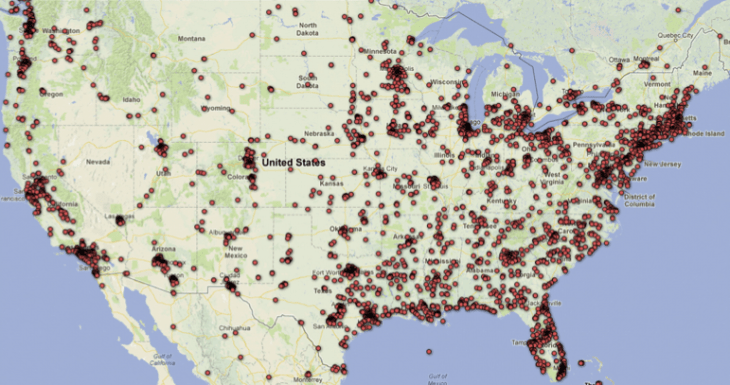Researchers have found that Twitter is a surprisingly useful tool for locating HIV outbreaks. “This study provides the first set of evidence for how real-time social media data might be used for extracting, detecting, and remote monitoring of health-related attitudes and behaviors,” writes the UCLA team. “Results suggest the feasibility of using data from real-time social networking technologies to identify HIV risk-related communications, geographically map the location of those conversations.”
The team mapped over 9,800 tweets with sexual and drug-related themes and found that their locations were a good predictor for established statistics on HIV-prevalence. “Because of the growing amount of social media data, researchers and public health departments will soon be able to build upon these methods to more accurately monitor and detect health behaviors and disease outbreaks.”
There are a few important limitations to the study. For one, both the tweets and the data on HIV prevalence are “reported.” That is, the study may not be good at finding the prevalence of HIV or diseases that no one knows about. Second, the study is limited to the spread of social media. Where an area lacks adoption, researchers will have a blind spot.
This isn’t the first time the Internet has been used to track diseases. Back in 2008, researchers discovered that Google searches were a handy way to track flu outbreaks. Now, cutting-edge researchers are looking at whether social media can also predict violence. Ron Conway’s gun-violence nonprofit held a hackathon to see if law enforcement could identify primers to gang violence on social media and intervene before shots were fired.
While there may be downsides to over-sharing on social media, it appears there are benefits as well.
